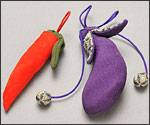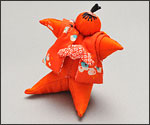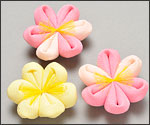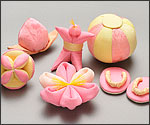Kasa-fuku (Ornamental Hanging Handiworks) (Sakata City)
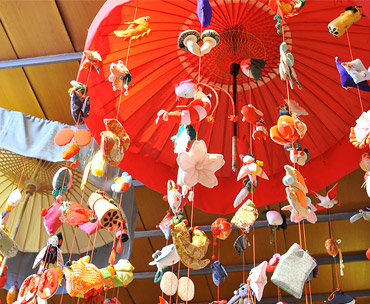
History/Outline
Kasa-fuku, a type of auspicious hanging ornament, was made by commoners wishing for happiness and prosperity
Kasa-fuku is one of the traditional Tsurushi-kazari (hanging ornament) transmitted in Sakata since the Edo Period (1603-1868). The custom still remains that local people donate Kasa-fuku to the local shrines and temples to
pray for the prosperity of their descendants. Their incorporation into Mikoshi processions can be seen at the Sanno Festival held at Hiei Shrine. Although Kamekasa-hoko (festival floats) used in the festival were made by artisans in Kyoto,
Kasa-fuku ornaments donated to the shrines and temples are handmade by local women. The Sakata Chamber of Commerce and Industry Women's Association paid great attention to Kasa-fuku after they were almost forgotten, trying to use them to
spread traditional local culture and revitalize their hometown.
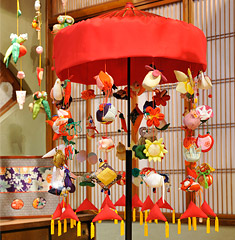
Techniques/Characteristics
Kasa-fuku handiworks are made by citizens wishing for happiness and good luck.
Together with Hina-no-tsurushi-kazari in Inatori in Shizuoka Prefecture and Sage-mon in Yanagawa City in Fukuoka Prefecture, Sakata's Kasa-fuku is said to be one of Japan's three biggest hanging ornaments. The Kasa-fuku
features a canopy with fringe. The crafting of Kasa-fuku begins with collecting old fabric and is all done by hand.
The 5th Kasa-fuku exhibition took place in 2010, where women made safflower-dyed Kasa-fuku ornaments, each one having its own meaning. An eggplant design stood for great ambition, and the "Sarukko" means bad fortunes will go away.
The 5th Kasa-fuku exhibition took place in 2010, where women made safflower-dyed Kasa-fuku ornaments, each one having its own meaning. An eggplant design stood for great ambition, and the "Sarukko" means bad fortunes will go away.
Main Products
●Eggplant Design ●Sarukko Design ●Safflower-dyed Hand-made Crafts
